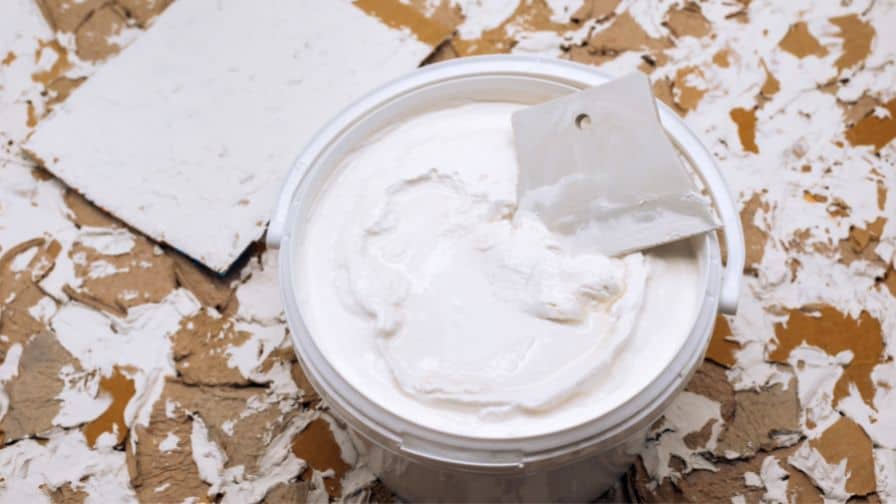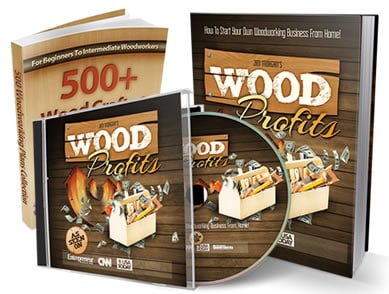
If you’re looking for an alternative to Bondo, you’ve come to the right place. In this blog post, we will discuss three alternatives that are worth considering. Each of these products has its own unique benefits, so it’s important to choose the one that best suits your needs. Let’s get started!
What Is Bondo And What Are Its Uses
Bondo is a putty-like substance that is used to fill in cracks, holes, and other imperfections on surfaces. It is commonly used on wood, metal, and fiberglass surfaces. When bondo dries, it forms a hard, durable surface that can be sanded, painted, or stained.
There are many different uses for bondo, including:
- Filling in cracks and holes in wood surfaces
- Filling in gaps between trim and molding
- Repairing damaged drywall
- Filling in dents and dings in metal surfaces
- Repairing cracked or chipped fiberglass surfaces
Bondo is a great product to have on hand for any do-it-yourselfer. It is easy to use and can be found at most hardware stores.
Bondo Alternatives You Should Consider
There are many reasons why you might want to use an alternative to bondo. Perhaps you’re looking for a product that is less messy or easier to work with. Or maybe you’re concerned about the health hazards associated with working with bondo. Whatever your reason, there are plenty of bondo alternatives worth considering.
3 Bondo Alternatives You Should Consider
1. Vallejo plastic putty
Vallejo plastic putty is a great bondo alternative for a number of reasons. It’s easy to apply but requires tool work to smooth out, and it doesn’t have the strong odor that bondo does. Additionally, it’s less likely to cause skin irritation.
2. Liquitex modeling paste
Liquitex modeling paste is another bondo alternative that is worth considering. It’s a bit more expensive than bondo, but it’s also much easier to use. It dries quickly and can be sanded down easily, making it a great option for those who want to avoid the messiness of bondo.
3. Wood filler
Wood filler is a bondo alternative that is commonly used by woodworkers. It’s easy to apply and dries quickly, making it a great option for those who want to avoid the messiness of bondo. Additionally, it can be sanded down easily and doesn’t require a primer before painting.
Choosing The Right Bondo Alternative
Now that you know about three bondo alternatives, it’s time to choose the right one for your needs. Consider the project you’re working on and the advantages and disadvantages of each product before making your decision. With so many great options available, there’s no reason to use bondo when there are so many great alternatives available.
Discover 1,000 Hours Of Step-By-Step Woodworking Videos

It’s called Woodwork101. A database of detailed videos and blueprints in crystal clear, mouth-watering HD that will take you by the hand and show you that DIY home projects done the right way are easy, fun, and always of top quality… turning a dream into reality in a heartbeat. Getting you that perfect build each and every time.
How To Choose The Right Alternative For Your Needs
When you think of woodworking, the first thing that comes to mind is probably working with wood. But what if you need to fill in a crack or hole in your woodwork? You can’t just use any old filler; you need something that will bond well with the wood and not crack or chip over time. That’s where a good bondo alternative comes in.
There are a few things to consider when choosing a bondo alternative for your woodworking needs.
The first is the type of wood you’re working with. If you’re working with hardwoods, you’ll need a different type of filler than if you’re working with softwoods. Hardwoods are dense and require a stronger filler that can hold up to the wear and tear of daily use. Softwoods are less dense and can be damaged more easily, so you’ll need a filler that’s not as strong but can still provide a good bond.
The second thing to consider is the size of the crack or hole you’re trying to fill. If it’s a large hole, you’ll need a filler that can fill in the entire space without shrinking too much. If it’s a small crack, you can get away with using a smaller amount of filler.
Finally, you’ll need to consider the color of the filler. You don’t want to use a white filler on a dark piece of wood, as it will be very obvious. Likewise, you don’t want to use a dark filler on a light piece of wood, as it will be difficult to see the repair. Choose a color that closely matches the color of the wood you’re working with.
Keep these things in mind and you’ll be able to choose the right bondo alternative for your woodworking needs.
Pros And Cons Of Each Alternative
When it comes to home repairs, there are a variety of ways to go about them. For example, you can use Vallejo plastic putty, Liquitex modeling paste, or wood filler. But what are the pros and cons of each option?
Vallejo plastic putty is great for filling in cracks and holes. It’s also easy to use and relatively inexpensive. However, it can be difficult to remove once it dries, and it doesn’t always adhere well to surfaces.
Liquitex modeling paste is a bit more expensive than Vallejo plastic putty, but it dries harder and is easier to remove. It also adheres well to surfaces and is great for filling in large cracks and holes. However, it can be difficult to work with and doesn’t always give a smooth finish.
Wood filler is the most expensive option, but it’s also not the most durable. It does not adhere well on shiny or slick surfaces but it dries hard and is easy to remove using rubbing alcohol. It’s great for filling small cracks and holes indoors, but it’s not ideal for larger repairs outdoors.
When choosing a home repair option, it’s important to consider the size of the repair, the surface you’re working on, and your budget.
Can Vallejo Plastic Putty Be Sanded?
Yes, Vallejo plastic putty can be sanded. This type of putty is often used in woodworking, as it provides a strong bond and dries quickly. It can be sanded down to create a smooth surface. So, if you’re looking for putty that can be sanded, Vallejo plastic putty is a good option.
[Video] 3 Most Common Mistakes
When Setting Up Shop

A woodworking friend of mine shared this video by Ralph Chapman with me that helped him set up his workshop.
The video explains the benefits of Ralph Chapman’s guide about setting up an affordable workshop and avoiding the most common mistakes offers to anyone interested in woodworking.
Does Vallejo Plastic Putty Shrink?
Subscribe to Herbert Erpaderp
Shrinking is always a concern when working with putties. Vallejo putty seems to shrink a bit more than other brands, so be careful when using it. It’s best to apply it in thin layers to avoid any issues.
If you’re looking for a bondo alternative for woodworking, Vallejo putty is a good option
Can You Use Modeling Paste On Wood?
Yes, you can use modeling paste on wood. This product can help to bond wood surfaces together and fill in small gaps or cracks. It can also be used to seal wood surfaces before painting or staining.
If you are using modeling paste on wood for the first time, be sure to read the instructions carefully. This product can be difficult to work with for beginners, so it’s important to follow the directions. You may also want to practice on a scrap piece of wood before working on your project.
Can Modeling Paste Be Sanded?
Sanding modeling paste is a necessary step in many woodworking projects. Modeling paste is a putty that is used to fill holes, cracks, and other imperfections in the wood. It can be sanded smooth once it dries.
If you’re working with modeling paste for the first time, here are a few tips to get the best results:
- Use a putty knife to apply the modeling paste.
- Work in small sections so that the paste doesn’t dry out before you’re able to smooth it.
- Use fine-grit sandpaper to sand the paste once it’s dry.
Modeling paste is another substitute for Bondo that woodworkers often use. It’s easy to sand and can be painted over once it dries. If you’re working on a woodworking project that requires smooth, even surfaces, modeling paste is a good option to consider.
Does Modeling Paste Crack?
Subscribe to Home Improvement Woodworking
Yes, unfortunately. Over time, as the wood expands and contracts with changes in temperature and humidity, the paste can start to break down and crack.
You can help prevent this by sealing the wood before you apply the modeling paste, and by using a thin layer of paste. If you do get cracks, you can try to repair them with wood filler or caulk.
Can Liquitex Be Used On Wood?
Yes, Liquitex can be used on wood as a putty. It is a versatile product that can be used for a variety of purposes, including filling in cracks and holes.
[Guide] How To Launch Your Woodworking Business For Under $1000
Click Here To View
If you’re considering turning your woodworking hobby into a part-time business check out this helpful guide on how to get started.
Is Bondo Better Than Wood Filler?
Bondo is better than wood filler for many reasons. Bondo has a shorter drying time, so you can get on with your project faster. Bondo also doesn’t require too much coating, so it’s less likely to crack or peel over time.
Plus, Bondo is great for repairing wood that has already been painted or stained. So if you’re looking for a quick and easy way to repair your woodworking projects, Bondo is the way to go.
What Are The Different Types Of Wood Filler?
Subscribe to This Old House
There are two types of wood filler available on the market today. Each type has its own advantages and disadvantages, so it’s important to choose the right one for your particular project.
Water-based wood fillers are made from a combination of wood pulp, cellulose, and gypsum. They’re easy to apply and clean up, and they don’t emit strong fumes. Water-based wood fillers can be used indoors or outdoors.
Petroleum-based wood fillers are more durable than water-based wood fillers, so they’re ideal for outdoor use. Petroleum-based wood fillers can be difficult to apply and clean up, and they emit strong fumes.
When choosing a wood filler, it’s important to consider the type of project you’re working on. For small projects, a water-based wood filler is usually sufficient. For larger projects or projects that will be exposed to the elements, a petroleum-based wood filler is a better choice.





